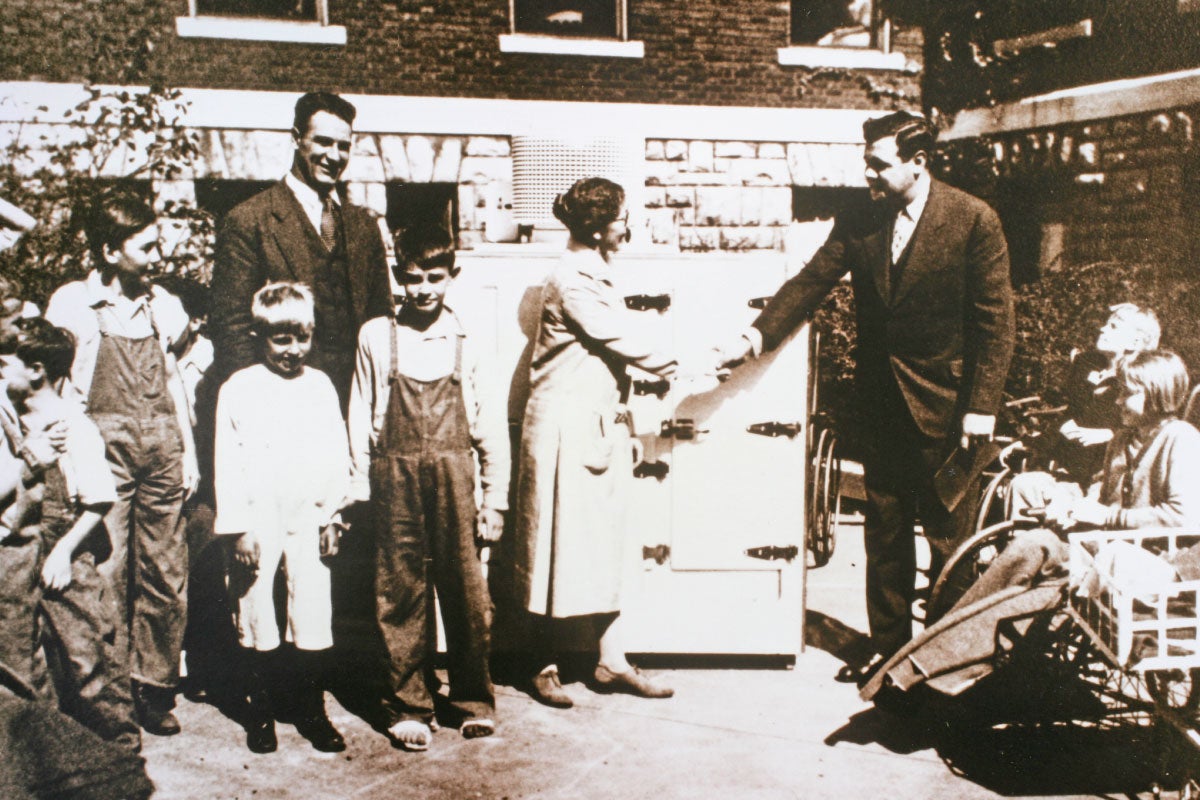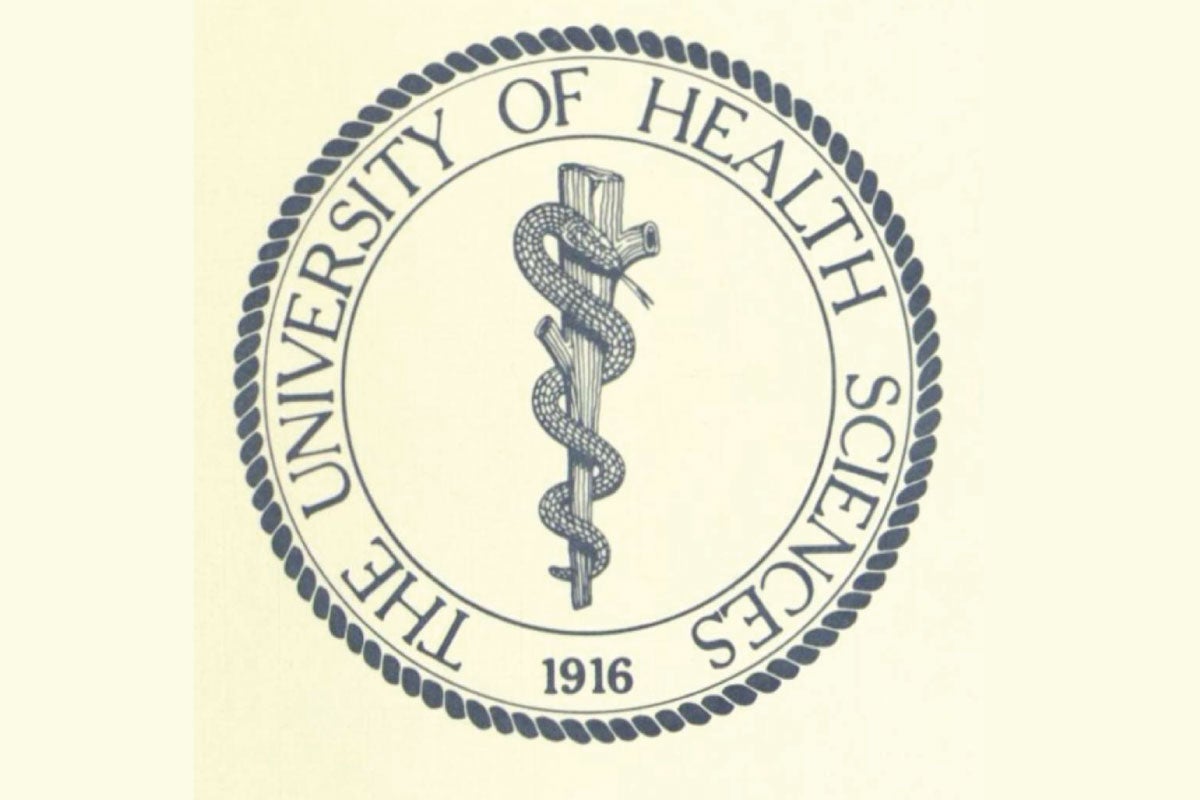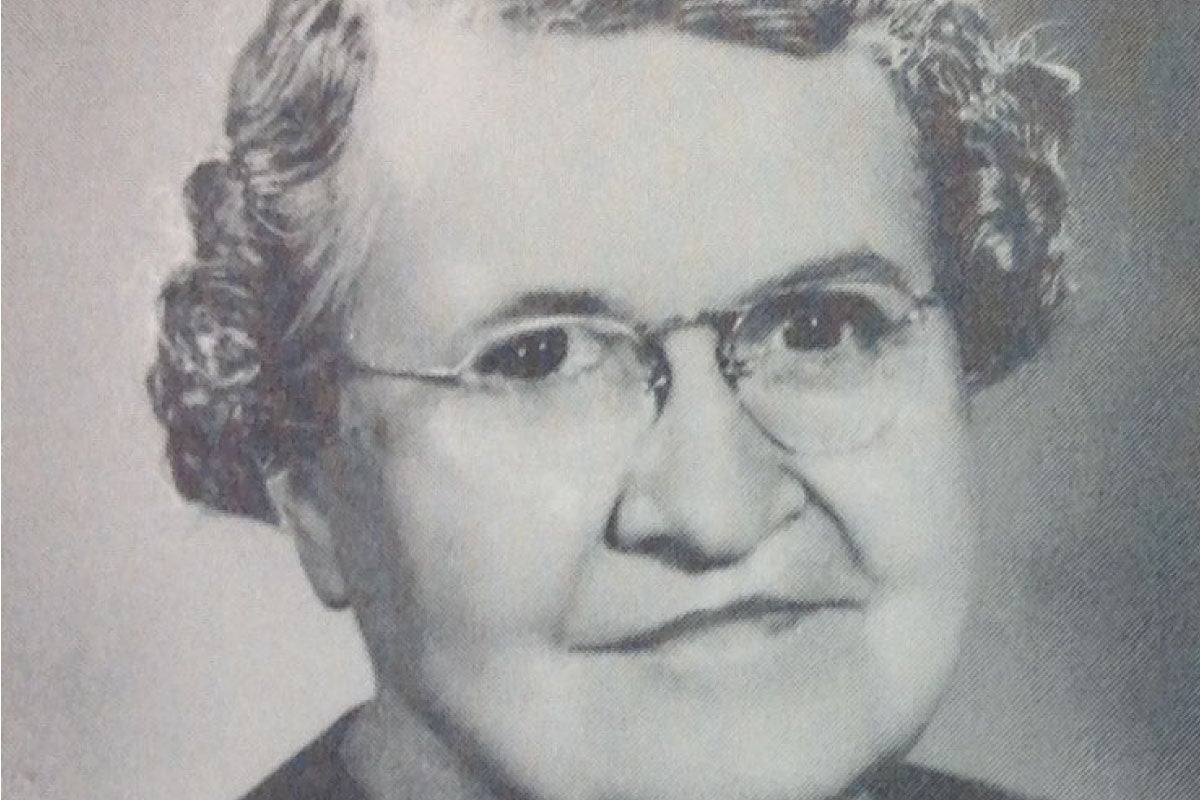100+ Years of Excellence

KCU has a long, rich history of osteopathic medicine. Founded in 1916 by George J. Conley, DO, KCU is the oldest medical school in Kansas City, Mo., and the largest medical school in Missouri.
In the early 2000s, we expanded our academic offerings to include the College of Biosciences. In 2017, we begin the next 100 years with a second campus in Joplin, Missouri, and a new Doctor of Clinical Psychology (PsyD) program on the Kansas City campus. In 2021, we broke ground on the construction of a College of Dental Medicine in Joplin, which opened in 2023.

KCU-Kansas City’s Administration Building was a gift from the Alumni Association in 1979. Prior to KCU-Kansas City calling it home, the Administration Building was the original Children’s Mercy Hospital. While renovated in 2015, the building kept the original skylights for the hospital’s surgery room.
Prior Kansas City locations for KCU-Kansas City include:
- 7th and Wyandotte (1916)
- 15th and Troost (1917)
- 2105 Independence Avenue (1921)

Evolving with the times and what best reflected our programs, our name has changed throughout the years.
- 1916 - The Kansas City College of Osteopathy and Surgery (KCCOS)
- 1970 - The Kansas City College of Osteopathic Medicine (KCCOM)
- 1980 - University of Health Sciences (UHS)
- 2004 - Kansas City University of Medicine and Biosciences (KCUMB)
- 2020 - Kansas City University (KCU)

Mamie E. Johnston, DO, became the first graduate from the Kansas City College of Osteopathy and Surgery, now KCU, in 1917. Dr. Johnston continued her education when the University instituted our new four-year curriculum, and graduated again with the class of 1918.
Dr. Johnston became a fixture at the University. In 1919, she joined our faculty, teaching gynecology and pediatrics for 47 years. In 1940, the Johnston Hall science building opened, named in her honor. Retiring in 1981 at the age of 92, Dr. Johnston practiced osteopathic medicine for 64 years. She passed away on November 6, 1986.

KCU opened its second campus in Joplin, Missouri in 2017. KCU-Joplin is the first medical school to open in Missouri in nearly 50 years and it’s the only medical school in the Southwest region of the state.
The campus building was once the city’s temporary hospital following a 2011 tornado. However, extensive renovations transformed the building into a state-of-the-art center for learning.
KCU-Joplin was made possible by our community partners, including Mercy Hospital Joplin, Freeman Health System, the City of Joplin and philanthropic leadership from the surrounding community.
Historical Highlights
Kansas City University is home to the oldest medical school in Kansas City, Mo., and the largest in Missouri.
1916
The Kansas City College of Osteopathy and Surgery (KCCOS) is founded. George J. Conley, DO, becomes the college's first president. Classes begin in a building at 7th and Wyandotte.
1917
Mamie Johnston, a transfer student, becomes the first graduate. KCCOS moves to 15th and Troost.
1921
2105 Independence Avenue becomes the school's address.
1936
KCCOS opens Conley Hospital on Nov. 16, 1936, with 35 beds. It was the first undergraduate teaching hospital on the campus of an osteopathic college.
1940
Johnston Hall Science Building is dedicated.
1944
The 100-bed Wesley Hospital at 11th and Harrison is purchased, and Conley Hospital is converted to a maternity hospital.
1950
Dr. Joseph M. Peach is elected the College's second president.
1964
Dr. Richard Eby succeeds Dr. Joseph Peach as president.
1965
Dr. Richard Eby resigns and Dr. K.J. Davis, alumnus and dean of the College, becomes interim president.
1966
Dr. Eugene B. Powers is installed as the fifth president. The College celebrates its golden anniversary and becomes the largest osteopathic college in the United States.
1968
On the sudden death of Dr. Eugene B. Powers, Dr. K.J. Davis is again selected as interim president. Mazzacano Library opens. Dr. Rudolph S. Bremen becomes the sixth president.
1970
KCCOS becomes The Kansas City College of Osteopathic Medicine (KCCOM).
1972
The Center for Health Sciences, later known as University Hospital, is opened.
1979
The new Administration Building, a gift from the Alumni Association, is occupied after extensive renovation, and 1750 Independence Avenue becomes the University's permanent address.
1980
The school's name becomes the University of Health Sciences.
1986
Keith Wilson, Jr., JD is inaugurated as the seventh president.
1988
Dr. Elmer H. Whitten is inaugurated as the eighth president. University Hospital closes.
1991
John P. Perrin, JD, becomes the ninth president.
1994
Jack T. Weaver, DO, becomes the 10th president.
1995
Karen L. Pletz, JD, is installed as the University's 11th president.
1996
The Educational Pavilion, a four-story, state-of-the-art facility containing classrooms, a library, cafeteria, laboratories and faculty offices, is dedicated. Classes begin on the consolidated campus.
1998
The University receives its first five-year accreditation by the North Central Association of Colleges and Schools.
UHS is one of eight leading medical schools, including Harvard and Vanderbilt, to receive a prestigious John Templeton Foundation Spirituality in Medicine Award.
1999
Alumni Hall is renamed Leonard Smith Hall.
The University joins with seven other leading research institutions in forming the Kansas City Area Life Sciences Institute.
2000
Genesis 2000, a three-year curriculum revision project, is integrated into the first-year curriculum and provides case-based learning with earlier clinical opportunities.
The Mary Lou Butterworth, DO, Alumni Center is completed.
Campaign 2000, the University's first major capital campaign, is launched.
2001
UHS and Rockhurst University inaugurate a dual-degree DO-MBA in healthcare leadership program.
2002
The University receives its first national challenge grant of $500,000 from The Kresge Foundation.
2003
The University receives a second Spirituality in Medicine Award from the John Templeton Foundation.
The Educational Pavilion is renamed the Darwin J. and Suzanne Strickland Education Pavilion.
Campaign 2000 ends with more than $16 million in contributions.
2004
The University's name is changed to Kansas City University of Medicine and Biosciences.
The Paul W. and Mary L. Dybedal Center for Research opens.
2006
The College of Biosciences confers the first master of science in biomedical sciences degrees to 17 students.
The Center for Clinical Competence opens, providing the first center in the region dedicated to human patient simulator and standardized patient programs.
2007
KCU launches a dual-degree program offering students the opportunity to earn a doctor of osteopathic medicine and a master of arts in bioethics.
The University officially opens Weaver Auditorium, a 1,500-seat auditorium named in honor of Jack T. Weaver, DO, Mary Weaver, Howard D. Weaver, DO, and Debra S. Albers, DO.
The Kesselheim Center for Clinical Competence is named in honor of Howard I. Kesselheim, DO, and his wife, Tina S. Kesselheim.
2008
KCU expands its bioethics degree offerings to include a one-year track and a part-time professional studies program for working adults.
KCU relocates its primary care office, KCU Physician Associates, on the campus of St. Joseph's Medical Center in Kansas City, Mo.
2009
The College of Biosciences confers the first masters of art in bioethics degrees to 24 students.
KCU breaks ground on three new construction projects: a campus park and garden, the D'Angelo Library and a new student activities center.
2010
H. Danny Weaver, DO, becomes the University's 12th president.
2011
KCU celebrated the opening of two new campus facilities that would dramatically improve students' experiences, the Student Activities Center and the D'Angelo Library. KCU inaugurated H. Danny Weaver, DO, as 12th president during an investiture ceremony on Sept. 22, 2011.
The Community Garden and Park opens, offering a park-like setting for employees and students to participate in collective gardening and harvest produce to donate to local charity initiatives.
2012
The cities of Kansas City, Mo., and Kansas City, Kan., respond to a request by KCU and issue a mayoral proclamation of Osteopathic Medicine Week during April 15-21.
2013
Marshall Walker, DO, is named as KCU's 13th president and chief executive officer, effective Jan. 1, 2013. The position is an interim one, until a national search for a permanent president is completed.
KCU begins the process of integrating tablet technology into the curriculum to increase sustainability efforts and provide students with a technological edge. As part of the effort, the University distributes Apple iPads and iPad minis to faculty and students.
Marc B. Hahn, DO, FAOCA, is named as KCU's 14th president and chief executive officer, effective July 1, 2013.
KCU unveils its Campus Master Plan, designed to identify facilities needs for the next 10 years. The aggressive plan includes remodeling some existing facilities and adding new buildings to the campus.
KCU partners with the Samuel U. Rodgers Health Center, Missouri’s first Federally Qualified Health Center, to improve access to medical care in the Northeast Neighborhood they both call home. KCU’s faculty physicians join SURHC’s existing staff in October. In addition, the University announces partnerships with the KC Care Clinic, the largest historically free clinic in the United States, and Research Medical Center’s Goppert-Trinity Family Care Center.
Score 1 for Health is officially incorporated into KCU and celebrates its 20th anniversary of providing free health screenings to urban schools in the Kansas City area.
2014
Officials announce the addition of a military track to the College of Osteopathic Medicine curriculum, making KCU only the third medical school in the United States to offer specialized training for military students.
On May 17, KCU celebrates the 10,000th graduate of the College of Osteopathic Medicine.
In July, KCU celebrates the opening of the new Academic Center. The Academic Center, which sits adjacent to both the D’Angelo Library and the Student Activities Center, houses two large lecture halls, as well as breakout rooms for smaller study groups. By renovating the former Weaver Auditorium space, the Academic Center cost KCU approximately half of what a newly constructed building would have.
In the fall, KCU closes the historic Administration Building for renovations. Built in 1916 as the original Children’s Mercy Hospital, the Administration Building was last renovated in the early 1970s and requires significant improvements to meet the needs of a state-of-the-art institution of higher education. In addition, a new Welcome Center will be added to the north side of the building, creating an inviting entry point for students, alumni and other guests.
KCU receives a $1 million gift from the estate of the late William Geb, DO (COM ’50), one of the largest gifts in the University’s history.
2015
KCU and Missouri Southern State University partner to provide an advanced medical acceptance program.
KCU-COM and Harris-Stowe State University execute an agreement to create a partnership that will enhance diversity in medical school and improve cultural competency for future physicians.
Esteemed HIV researcher Len Calabrese, DO, joins KCU Board of Trustees.
KCU’s improvements to historic Northeast Neighborhood spur $30-million HUD grant.
KCU purchases the Capri Motel to return land to green space.
Marc B. Hahn, DO, invested as the 14th president.
KCU announces plans to develop additional medical school campus in Joplin, Mo.
KCU, the University of Missouri – Kansas City (UMKC) and the University of Kansas (KU) Medical Center proudly announce a research consortium among the three Kansas City-area institutions.
KCU unveils refreshed brand identity.
2016
Celebrations surrounding KCU’s Centennial Year begin with the dedication of the Walker Family Welcome Center and the reopening of the Administration Building.
KCU breaks ground for the construction of the University’s new second campus in Joplin, Mo.
Year-long Centennial celebrations officially conclude with the Centennial Gala held at Kansas City’s Union Station.
2017
KCU opens its second campus in Joplin, Mo. KCU-Joplin is the first medical school campus in Missouri in nearly 50 years and it's the only medical school in the Southwest region of the state.
Edward O'Connor, PhD, MBA, FACHE, becomes Executive Vice-President of Academic and Research Affairs, Provost and Chief Academic Officer.
The Class of 2018 ranks No. 1 in the nation for first-attempt pass rates on the COMLEX Level 1.
Classes begin at KCU-Joplin with an inaugural class of 160 students.
The University launches a new Doctor of Clinical Psychology (PsyD) program on the Kansas City campus.
KCU receives $1 million commitment from J.E. and L.E. Mabee Foundation for a Center for Medical Education Innovation.
2018
KCU breaks ground for a state-of-the-art Center for Medical Education Innovation.
The Chronicle of Higher Education recognizes KCU as a “Great College to Work For.”
Bradley Vince, DO (COM ’98) and Patricia Vince, Brad Bergman and the Jack and Glenna Wylie Charitable Trust establish a $1 million challenge grant for scholarships.
2019
KCU announces plans to open a College of Dental Medicine in Joplin, Mo., to meet the needs of the rural population in the Midwest.
KCU receives the distinction of one of only three osteopathic medical schools to receive an Exceptional Outcomes designation with a 10-year accreditation by the Commission on Osteopathic College Accreditation.
2020
The Center for Medical Education Innovation opens on the Kansas City campus.
2021
On May 22, the tenth anniversary of the Joplin tornado, KCU held a groundbreaking for the College of Dental Medicine planned to open on the Joplin campus in 2023.
2023
KCU unveiled the nation’s newest and most innovative College of Dental Medicine in a ribbon-cutting ceremony at the Harry M. Cornell Center for Dental Education on its McIntire-Farber Campus in Joplin, Missouri on Monday, June 26, 2023.